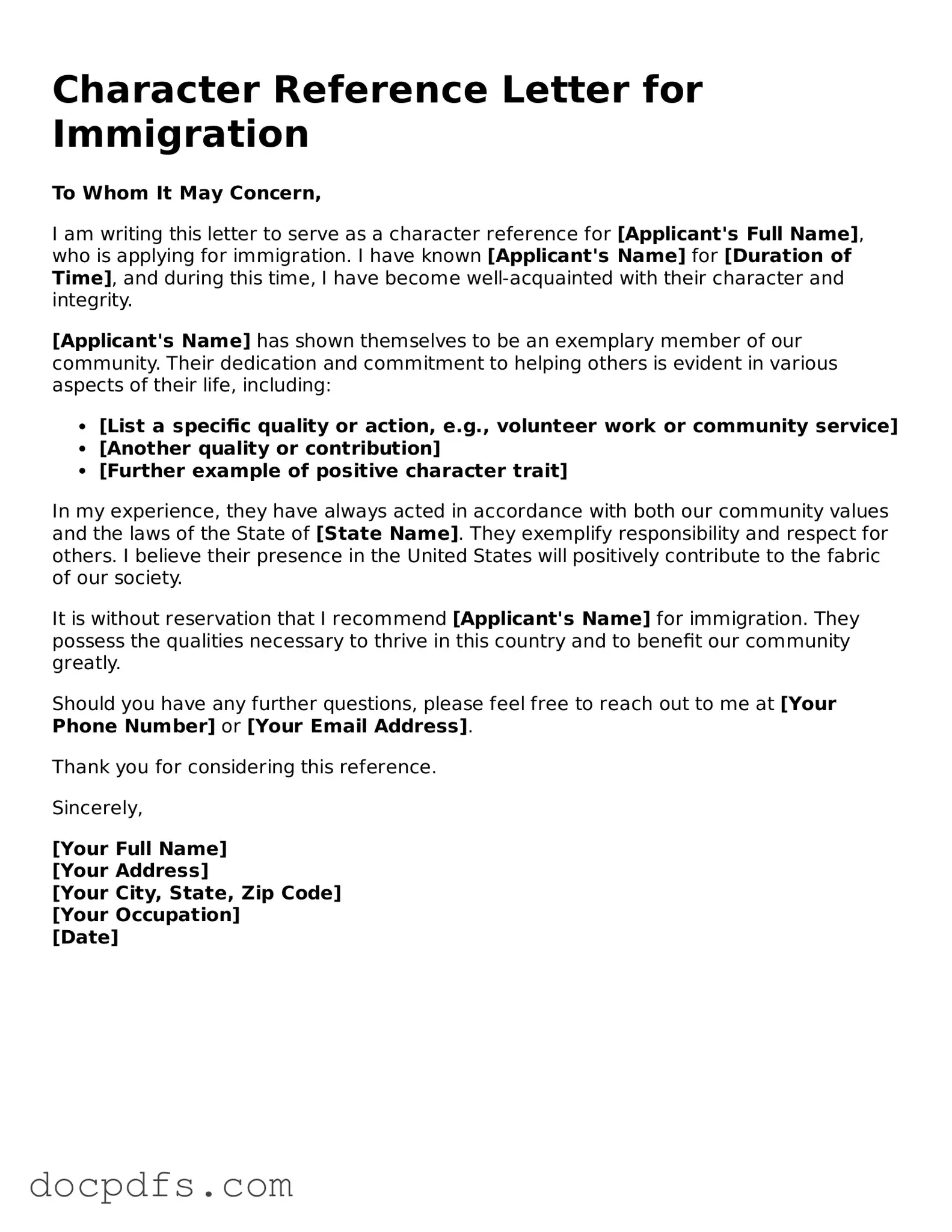What is a Character Reference Letter for Immigration?
A Character Reference Letter for Immigration is a document that supports an individual's application for immigration by providing insight into their character and background. This letter typically comes from someone who knows the applicant well, such as a friend, employer, or community leader, and can speak to their moral character, contributions to society, and overall behavior.
Who should write the Character Reference Letter?
The letter should be written by someone who has a close relationship with the applicant and can provide a personal perspective on their character. Ideal writers include:
-
Employers or supervisors
-
Teachers or professors
-
Community leaders or clergy
-
Friends or family members
It is essential that the writer knows the applicant well enough to provide specific examples of their good character.
What should be included in the letter?
A well-crafted Character Reference Letter should include the following elements:
-
Introduction:
The writer should introduce themselves and explain their relationship to the applicant.
-
Personal observations:
The writer should share specific examples of the applicant's character traits, such as honesty, reliability, and kindness.
-
Community involvement:
Mention any contributions the applicant has made to the community or society.
-
Conclusion:
The writer should summarize their support for the applicant and express confidence in their character.
How long should the letter be?
The letter should typically be one to two pages long. It should be concise yet detailed enough to provide a clear picture of the applicant's character. Brevity is key, as immigration officials often appreciate straightforward and to-the-point letters.
While there is no strict format, the letter should be typed and follow a professional structure. It should include the writer's contact information at the top, followed by the date, and then the recipient's information if known. The letter should be signed at the bottom, preferably with a handwritten signature.
Can the letter be written in a language other than English?
If the letter is written in a language other than English, it must be accompanied by a certified translation. This ensures that immigration officials can accurately understand the content of the letter.
How important is the Character Reference Letter in the immigration process?
The Character Reference Letter can play a significant role in the immigration process. It provides personal insight that may not be available through official documents. A strong letter can enhance the applicant's case by demonstrating their positive attributes and commitment to contributing to society.
Can multiple letters be submitted?
Yes, multiple Character Reference Letters can be submitted. Having letters from various individuals who can speak to different aspects of the applicant's character can strengthen the application. Each letter should be unique and provide distinct insights into the applicant’s character and contributions.
How do I ensure the letter is effective?
To ensure the letter is effective, the writer should:
-
Be honest and sincere in their writing.
-
Provide specific examples that illustrate the applicant's character.
-
Keep the tone positive and supportive.
-
Follow the suggested format and length guidelines.
Encouraging the writer to take their time and reflect on their experiences with the applicant will help create a compelling letter.
